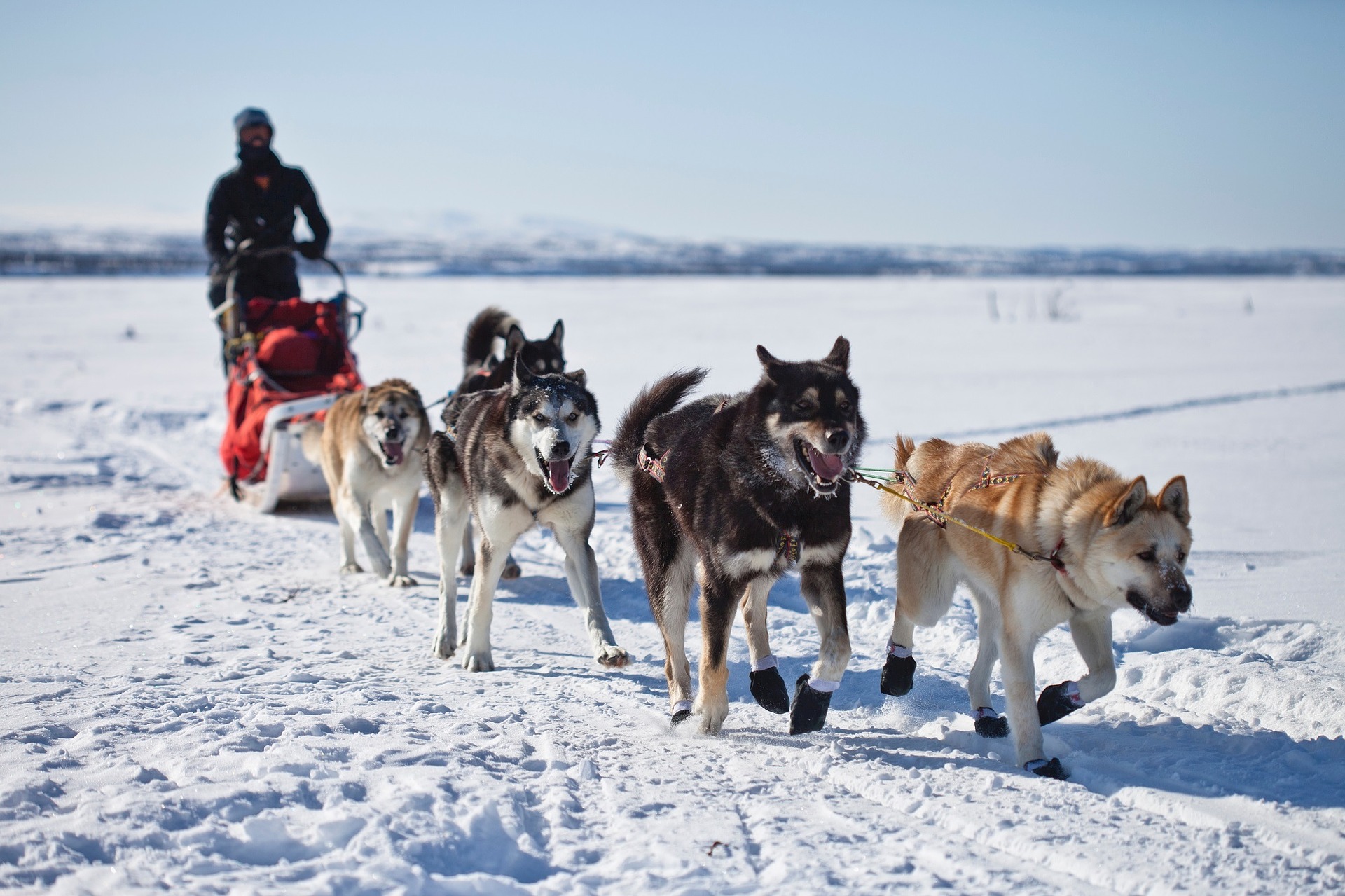Because many of our CONUS members and friends are in the midst of winter, I thought we’d take a look at a seasonal mode of transportation: dogsled technology. The logistics of mushing is older than the Russian-Alaskan frozen bridge; about 2000 BC or more.
There are two types of sleds: basket and toboggan. The basket sled has runners that hold it several inches above the surface to reduce friction over packed snow & ice. It is pulled by a linear tug-line just as most of us have seen in pictures. A foot operated brake will slow it to a stop by digging into the snow. Toboggans provide more surface contact area so they won’t sink into fresh powdery snow. It is usually pulled by a fan shaped hitch to better distribute the pulling power and traction. Toboggans have no brakes other than the musher throwing out a snow hook or anchor. There are also combinations/hybrids of these two types in use depending on the missions performed.
A 40 pound sled may carry a ton of cargo (400-700lbs typical). Sleds are made strong to take a beating, yet must be light and flexible. Ash, birch, and oak wooden sleds are still used by the purists living off the land who must perform their own field repairs. Aluminum and carbon fiber are now used for racing where weight is an issue and break-down support is more readily available. Since there isn’t a whole lot of money to mass produce sleds, the average musher often builds his own. Racing sleds may cost around $4,000, and repair parts often consist of old carbon fiber hockey sticks.
While ponies, caribou, and men sometimes propel sleds, it is still mainly dogs that supply the ‘horsepower’. Muscle to pound, no other mammal is as strong or has as much endurance. They can provide warmth, companionship, and intelligence. In an emergency, they can be used as food for both man and team. [Ick!]. I had the opportunity to play with working sled dogs in Alaska. They are very friendly animals that adore human attention. They have to learn how to behave in airplanes, because the easiest way to travel long distances in Alaska is by bush-plane. Many cities in temperate climates [my St. Louis area included] also have sled dog clubs with both snow and wheeled events.
There are usually four positions in every tug-line dog team:
- Lead – The most intelligent and fastest dogs go here.
- Swing – They direct the team around turns and curves.
- Wheel – They are right in front of the sled and are the largest and strongest of the team.
- Team – Everyone else (total dogs in a team can be six to sixteen dogs – with occasional on-board spares or casualties).
While in operation, they don’t stop running for bodily functions, so mushers must be diligent to defensively and doggedly dodge doggie-doo. Sled dogs aren’t typically just huskies or malamutes. Almost any medium to large breed that has that special desire to run will work. Dogs bred to haul freight have warm & dense coats to hold their body heat in, while racing/sprint dogs generally have shorter coats to let the heat out. I’ve spent hours drafting in bicycle races, so I can attest that if you aren’t the lead dog, the view never changes. Since dogs are pack (social) animals, the team members all have to get along [unlike bicycle racers].
There is no other way to put it – these dogs love to run. They are depowered for harnessing by lifting their front feet off the ground. They bunny hop beside their handler to wherever they have to go. It looks silly, but it is the best way to control overly excited animals.
Back in the day, dogs were tossed a dried salmon a day for chow. But with modern nutritional science, dogs can now travel at 10-15 mph on packed surfaces for more than 100 miles a day. They can maintain a 28 mph pace for a couple hours, and could run to fatal exhaustion if the musher doesn’t hold them in check. My local veterinarian volunteers during the Alaskan Itidarod dogsled race to ensure dog welfare. For you MacGyver do-it-yourself types, there are four basic commands, gee and haw (left & right), whoa, and on-by. The latter is useful to let the team know not to investigate (sniff) whatever it is they are about to pass [dogs will be dogs!].
What about military use? Yup! Dogs were employed in WWII to patrol western Alaska during winter, and are still being used where the environment is too hostile for machinery. Dogs can warn of danger and protect the musher from wild animals and bad trail conditions. If the musher sees the lead dog fall through ice, he has a fighting chance of stopping before everyone else does too. Their only real predators on the trail are bears and moose. A moose will trample up and down the helpless line of dogs out of meanness. Bears are just looking for an easy meal.
What about the economics? I thought you’d never ask. Here is a great article on dogsleds to snow machines. Sounds like a level of repair type analysis would be required to make a scientific decision on which one to use. What about the logistics? I have trained you well! I found at least one 3PL that will use dogsleds, aircraft, and whatever else to bring what you want to where you want it. Just not always when you want it given the environmental conditions and terrain. Here is the logistics required for the Yukon Quest dogsled race.
Where cruise ships and tourist buses stop, World-champion dog mushers gather to sell their books and sign autographs to help support their dog teams. Which is great because it allows us opportunities to discuss logistics with those who use this specialized cold weather transportation mode. – Logistics in Action
